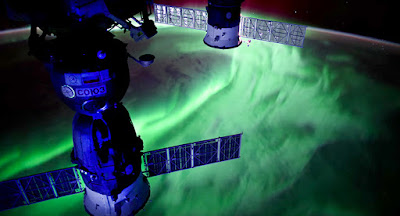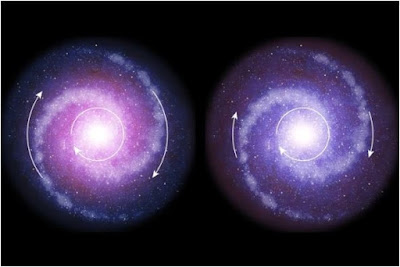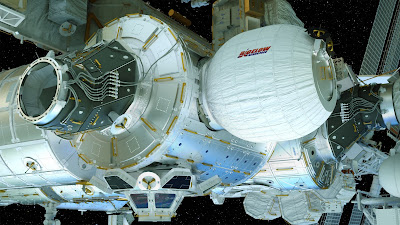 |
| Credit: Getty Images |
Topics: Education, Science, STEM, ResearchI've failed quite often.
I've received D's on Quantum Mechanics homework from an admired professor with the admonition "SEE THE ANSWER" in all caps as if shouting from the paper. I remember crying, largely out of frustration and out of the fact I truly had deep respect for the professor, who had talked me into majoring in physics in the first place (I was initially a math major). I also remember looking at the solutions in the Mezzanine of the library. I saw where my mistakes were. My next homework grade was a B- and my test score was an A. I passed Quantum with a high B overall.
Failure is a large part of the scientific enterprise. A story I heard years ago from a Thomas Edison experiment with a lab assistant (there had been an explosion):
Assistant: "When are you going to give up this crazy idea? This is the 9,999th time you've tried to invent this light bulb!"
Edison: "Yes. This is the 9,999th time we tried to invent the light bulb. But there's an explosive application that could prove useful later."
"Do not worry too much about your difficulties in mathematics, I can assure you that mine are still greater," Albert Einstein. I think he was referring to learning Tensor Calculus to describe the General Theory of Relativity.
Somehow we miss the fact that when Einstein was working at a patent office in Germany, he probably saw himself as a failure. He took a job because he'd made his then girlfriend pregnant. Being responsible, he took a job to support his new family. His "Miracle Year" was 1905 when he published four papers: The Photoelectric Effect, Brownian Motion, Special Relativity and Mass-Energy Equivalence (E=mc2).
The competitive nature of western civilization doesn't allow or celebrate failure. Reality television, sporting contests, millennials awarded medals for "just showing up" at t-ball doesn't account for the many stutter steps if not downright stumbles a team makes to a championship. We celebrate the aftermath; the end result looking effortless and inevitable, the great discoveries often preceded by a lot of hard work and...failure.
Some of that failure is by design: peer review I've often stated can be brutal and demeaning. It can discourage anyone in the sciences to rethink if this is "what you really wanted to do with your life." A whole comic series was started by Jorge Cham (who has a PhD in Mechanical Engineering) quite literally on this angst. There are sleepless nights, long experiments that take you through weekends (that everyone else outside seems to be enjoying). "Why am I doing it"? you may ask.
I tend to think of loud explosions and parents that didn't freak out (largely because I didn't die nor their house didn't burn down). You throw yourself back into the lab, the chalkboard or the computer program...out of love.
People in the sciences are usually there because they love it: solving complex problems is almost meditative; spiritual in the satisfaction of not just solving problems, but birthing in many cases something that didn't previously exist. Someone in their past supported them despite their socioeconomic status, gender, sexual orientation and said four important words: "you can do it."
And to show our love of the area and the support from family and friends, many of us did. **********Four weeks into my first semester of college, my academic confidence was completely shredded. I had back-to-back tests in cell biology, chemistry, and calculus, and my time management skills weren’t quite there yet. I failed my calculus exam, and suddenly I wasn’t sure I had the intelligence or the ability to get a degree in science.
My story has a happy ending—at least to me. Through stress eating, meltdowns, and support from my professor and older students, I studied my way to an A-minus in that calculus class. But, even better: I learned how to fail, something I keep learning and relearning as I come to the end of my second semester in graduate school. It’s the fundamental underpinning of scientific resilience—failing repeatedly, and picking yourself up to try again.
It’s what I think is missing from many young Americans’ educational experiences, and, in part, why I think so many of us, as smart and creative and technically adept as we are, shy away from scientific research as our careers.
Learning resilience is fundamental to a successful career as a scientist. The experiments we try will fail many times before they work, whether as an undergraduate, a PhD student, or a postdoc gunning for a faculty position.
But actually overcoming failure is challenging. Many students who began science degrees with me switched to other majors the first time a project failed. One failure and they were gone.
This dropout situation has lasting implications for American science. The US has plenty of scientists, but fewer and fewer are being born in the US. These foreign-born scientists are welcome, as far as I’m concerned, but with all the recent changes in immigration and visa policy, it’s an uncertain future—large numbers of our scientists-in-training could be forced to leave after they finish graduate school or postdocs.
Without these scientists, American science will suffer.
Scientific American:One Reason Young People Don’t Go Into Science? We Don’t Fail Well, Sara Whitlock















